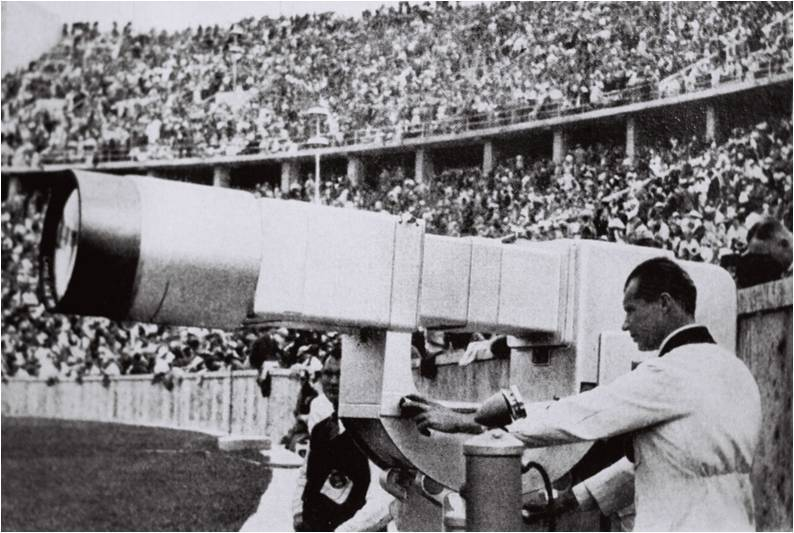
The functions of modern surveillance systems have long gone beyond the scope of video recording as such. Determining movement in the area of interest, counting and identifying people and vehicles, tracking an object in the stream - today even not the most expensive IP cameras are capable of all this. In the presence of a sufficiently productive server and the necessary software, the possibilities of the security infrastructure become almost limitless. But once such systems could not even record video.
From pantelegraph to mechanical TV
The first attempts to transmit images over a distance were made in the second half of the 19th century. In 1862, the Florentine abbot Giovanni Caselli created a device capable of not only transmitting, but also receiving an image over electrical wires - a pantelegraph. It’s just a stretch to call this unit a “mechanical TV”: in fact, an Italian inventor created a prototype of a facsimile machine.

Pantelegraph by Giovanni Caselli Caselli's
electrochemical telegraph functioned as follows. The transmitted image was first "converted" into a suitable format by redrawing with non-conductive ink on a sheet of stanil (tin foil), and then clamping onto a curved copper substrate. A gold needle acted as a reading head, scanning the metal sheet line by line with a pitch of 0.5 mm. When the needle was above the non-conductive ink area, the ground circuit was opened and current was applied to the wires connecting the transmitting pantelegraph to the receiving one. At the same time, the receiver needle moved over a sheet of thick paper impregnated with a mixture of gelatin and potassium hexacyanoferrate. Under the influence of an electric current, the connection darkened, due to which the image was formed.
Such a device had a lot of disadvantages, among which it is necessary to highlight low performance, the need for synchronization of the receiver and transmitter, on the accuracy of which the quality of the final image depended, as well as the laboriousness and high cost of maintenance, as a result of which the age of the pantelegraph turned out to be extremely short. So, for example, the Caselli devices used on the Moscow - St. Petersburg telegraph line worked for a little more than 1 year: having been put into operation on April 17, 1866, on the day of the opening of telegraph communication between the two capitals, the pantelegraphs were dismantled at the beginning of 1868.
Much more practical was the bildtelegraph, created in 1902 by Arthur Korn on the basis of the first photocell invented by the Russian physicist Alexander Stoletov. The device became world famous on March 17, 1908: on that day, with the help of the bildtelegraph, a photograph of the criminal was transferred from the Paris police station to London, thanks to which the policemen subsequently managed to figure out and arrest the intruder.

Arthur Korn and his Bildtelegraph
Such a unit provided good detailing of a photographic image and did not require any special preparation, but it was still not suitable for transmitting an image in real time: it took about 10-15 minutes to process one photograph. But the bildtelegraph has taken root quite well in forensics (it was successfully used by the police to transfer pictures, sketches and fingerprints between departments and even countries), as well as in news journalism.
A real breakthrough in this area took place in 1909: it was then that Georges Rin managed to achieve an image transmission with a refresh rate of 1 frame per second. Since the telephoto apparatus had a "sensor" represented by a mosaic of selenium photocells, and its resolution was only 8 × 8 "pixels", it never went beyond the laboratory walls. However, the very fact of its appearance laid the necessary foundation for further research in the field of image transmission.
The Scottish engineer John Byrd really succeeded in this field, who went down in history as the first person who managed to transfer images over a distance in real time, therefore it is he who is considered to be the "father" of mechanical television (and television in overall). Considering that Byrd almost lost his life during his experiments, having received an electric shock of 2000 volts while replacing a photovoltaic cell in a chamber he created, such a title is absolutely deserved.
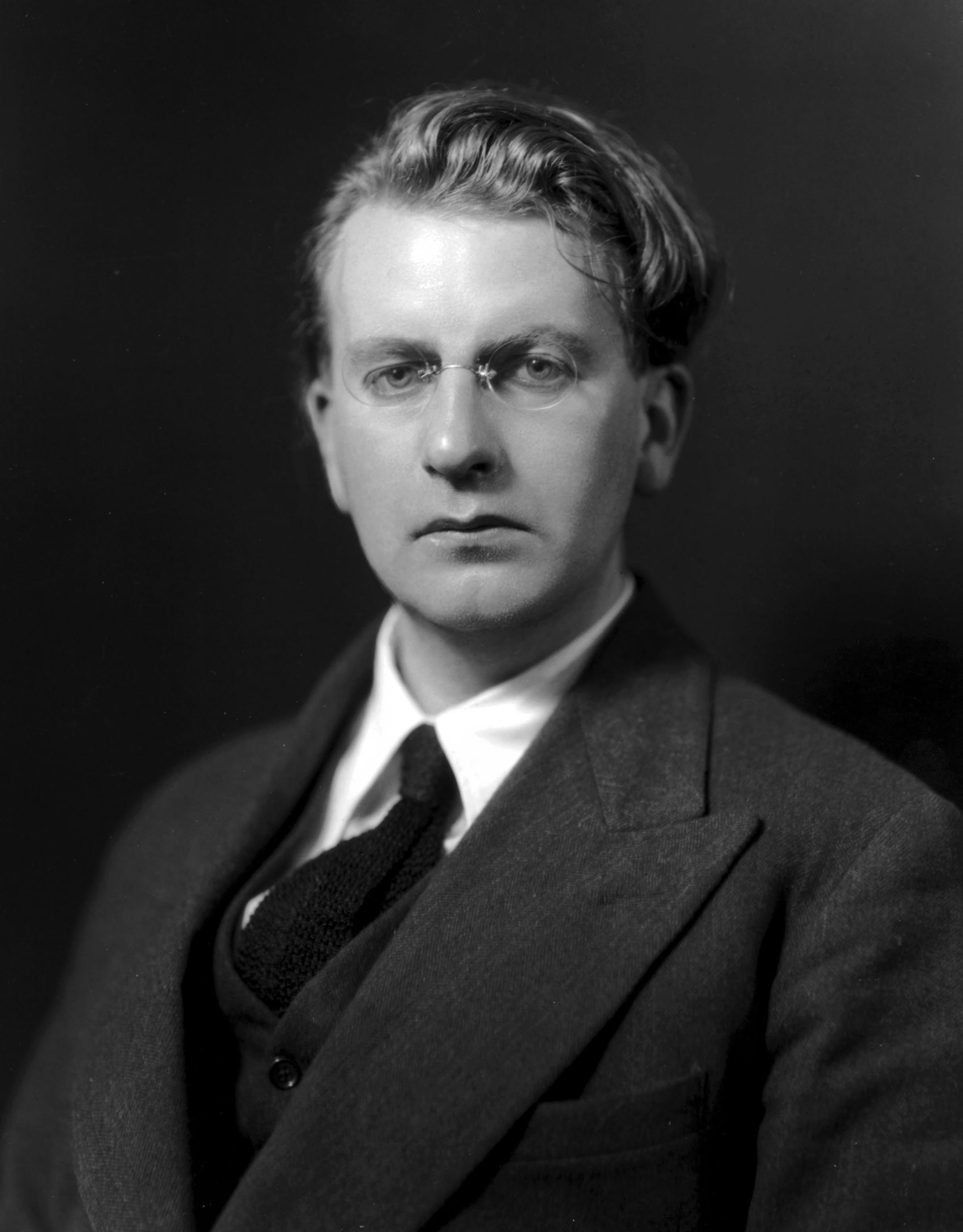
John Byrd, Inventor of Television
Byrd's creation used a special disc invented by German technician Paul Nipkow back in 1884. A Nipkov disk made of an opaque material with a number of holes of equal diameter, located in a spiral one turn from the center of the disk at an equal angular distance from each other, was used both for scanning the image and for its formation on the receiving apparatus.
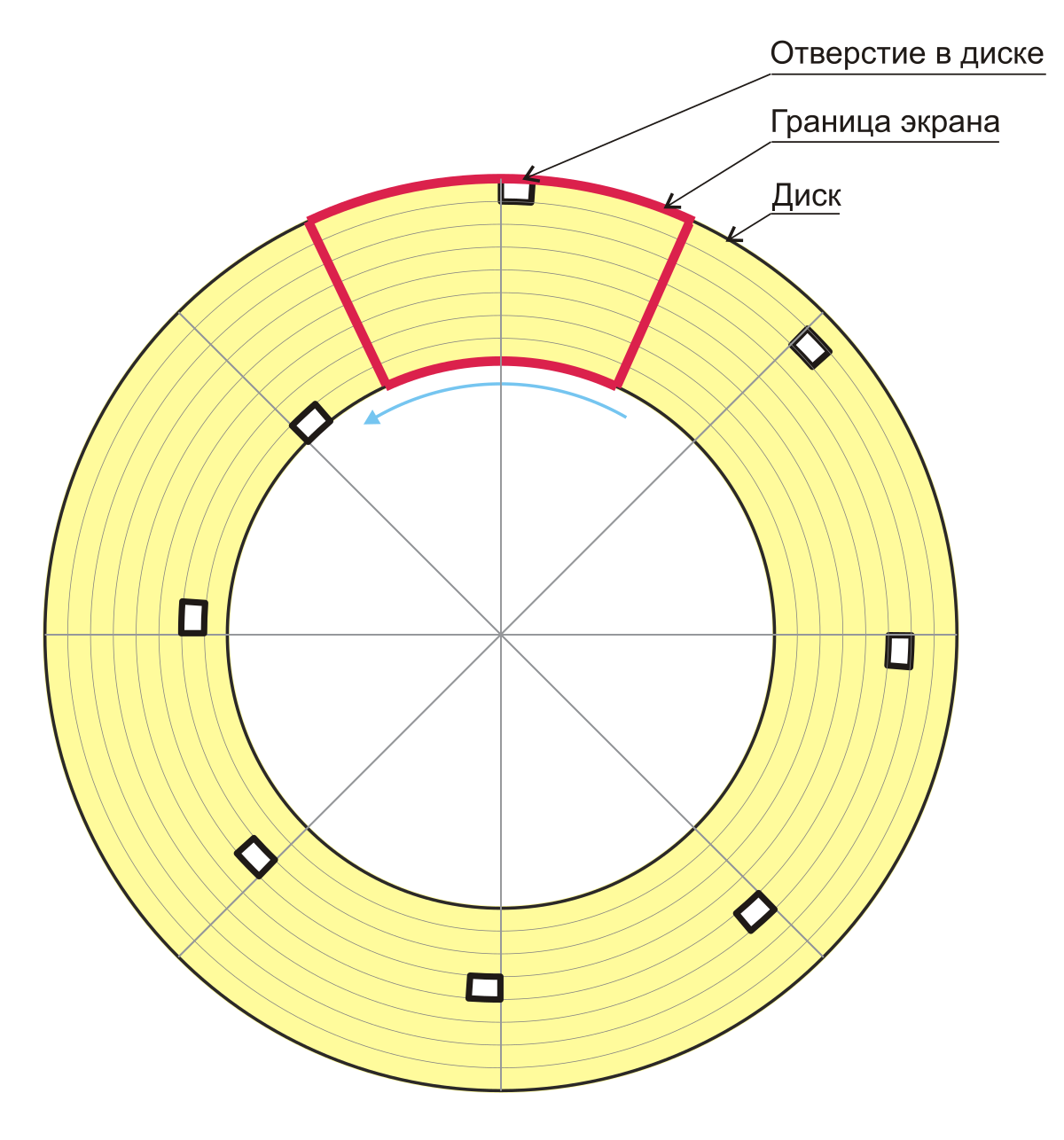
The device of the Nipkov disk
The lens focused the image of the subject on the surface of the rotating disk. Light, passing through the holes, fell on the photocell, due to which the image was converted into an electrical signal. Since the holes were arranged in a spiral, each of them actually performed a line-by-line scan of a specific area of the image focused by the lens. Exactly the same disc was present in the playback device, but behind it was a powerful electric lamp that senses the fluctuations in illumination, and in front of it was a magnifying lens or a lens system that projects an image onto the screen.
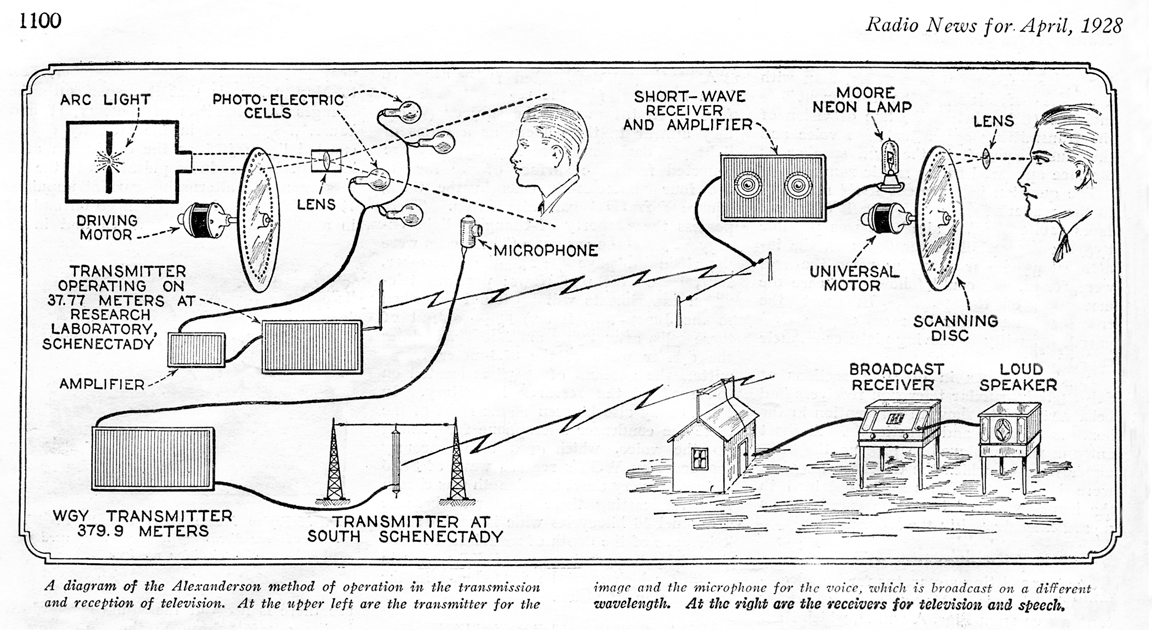
The principle of operation of mechanical television systems
Byrd's apparatus used a Nipkow disk with 30 holes (as a result, the resulting image had a scan of only 30 vertical lines) and could scan objects at a frequency of 5 frames per second. The first successful experiment in transferring a black and white image took place on October 2, 1925: then the engineer managed for the first time to broadcast from one device to another a halftone image of a ventriloquist doll.
During the experiment, a courier rang at the door to deliver important correspondence. Encouraged by the success, Byrd grabbed the discouraged young man by the hand and led him to his laboratory: he could not wait to evaluate how his brainchild would cope with the transfer of the image of a human face. Thus, 20-year-old William Edward Tainton, being in the right place at the right time, went down in history as the first person "to get on TV."
In 1927, Byrd conducted the first telecast between London and Glasgow (over a distance of 705 km) over telephone wires. And in 1928, the Baird Television Development Company Ltd, founded by an engineer, successfully carried out the world's first transatlantic television signal transmission between London and Hartsdale, New York. Demonstration of the capabilities of Byrd's 30-lane system turned out to be the best advertisement: already in 1929 it was adopted by the BBC and successfully used for the next 6 years, until it was replaced by more advanced equipment based on cathode ray tubes.
The iconoscope is a harbinger of a new era
The world owes the appearance of the cathode-ray tube to our former compatriot Vladimir Kozmich Zvorykin. During the Civil War, the engineer took the side of the White movement and fled through Yekaterinburg to Omsk, where he was engaged in the equipment of radio stations. In 1919, Zworykin went on a business trip to New York. Just at this time, the Omsk operation took place (November 1919), the result of which was the capture of the city by the Red Army practically without a fight. Since the engineer had nowhere else to return, he remained in forced emigration, becoming an employee of Westinghouse Electric (now CBS Corporation), which was already one of the leading electrical engineering corporations in the United States, where he was simultaneously engaged in research in the field of image transmission over a distance.
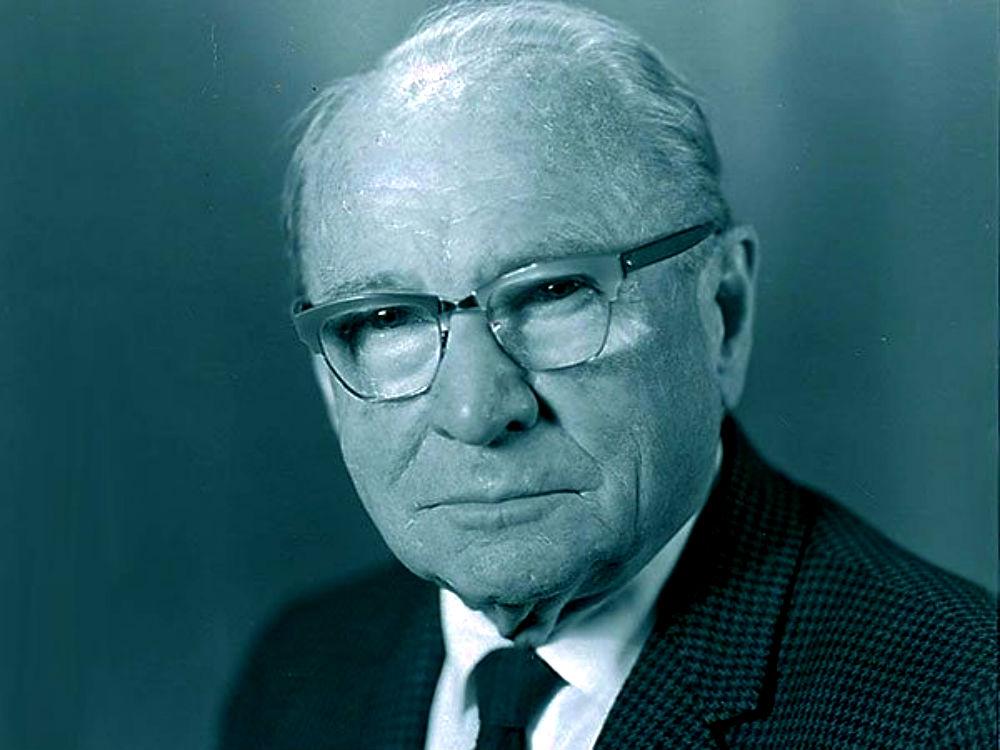
Vladimir Kozmich Zvorykin, creator of the iconoscope
By 1923, the engineer managed to create the first television device, based on a transmitting electron tube with a mosaic photocathode. However, the new bosses did not take the scientist's work seriously, so for a long time Zvorykin had to conduct research on his own, in conditions of extremely limited resources. The opportunity to return to full-fledged research activity was presented to Zvorykin only in 1928, when the scientist met another emigrant from Russia - David Sarnov, who at that time was vice president of Radio Corporation of America (RCA). Finding the inventor's ideas very promising, Sarnov appointed Zvorykin as the head of the RCA electronics laboratory, and the business got off the ground.
In 1929, Vladimir Kozmich presented a working prototype of a high-vacuum television tube (kinescope), and in 1931 he completed work on a receiving device, which he named “iconoscope” (from the Greek eikon - “image” and skopeo - “to look”). The iconoscope was a vacuum glass flask with a light-sensitive target and an electron gun located at an angle to it.

Schematic diagram of the iconoscope The
light-sensitive target 6 × 19 cm in size was represented by a thin plate of insulator (mica), on one side of which were applied microscopic (several tens of microns in size each) silver drops in an amount of about 1 200 000 pieces, coated with cesium, and on the other - solid silver coating, from the surface of which the output signal was taken. When the target was illuminated under the action of the photoeffect, silver droplets acquired a positive charge, the value of which depended on the level of illumination.
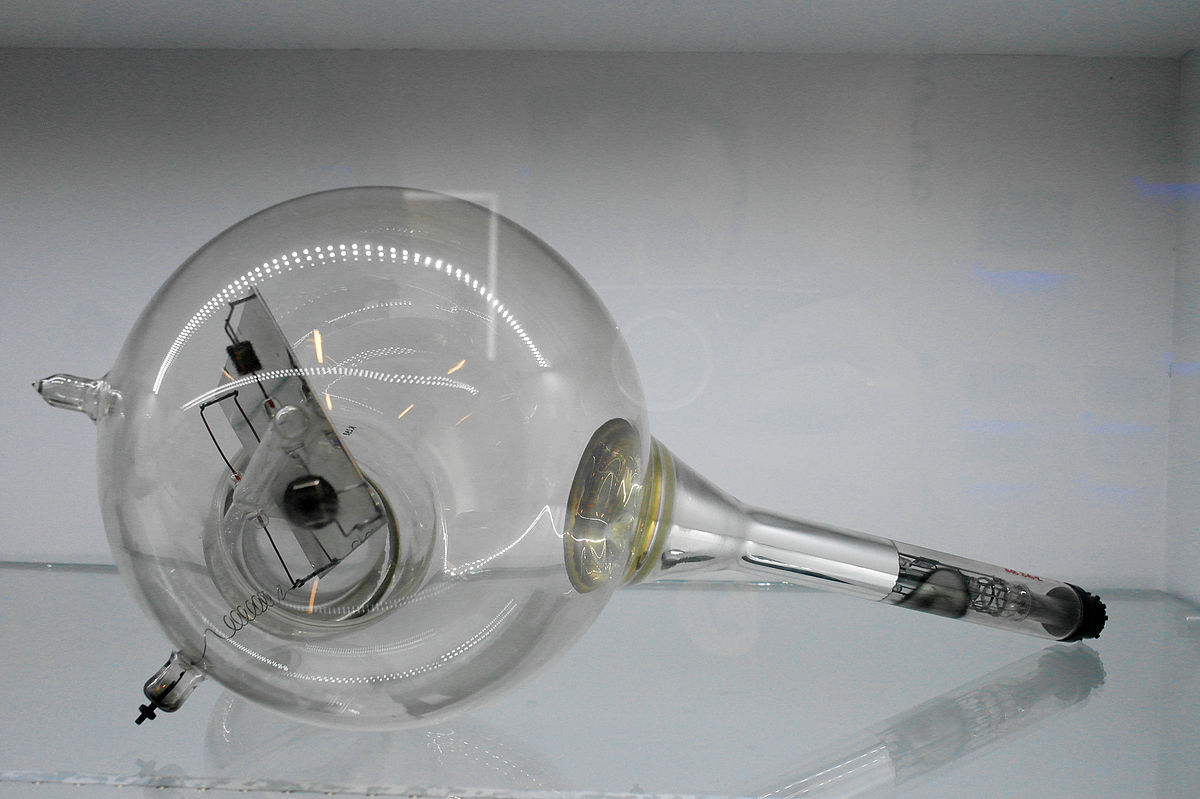
The original iconoscope on display at the Czech National Museum of Technology The
iconoscope formed the basis of the first electronic television systems. Its appearance made it possible to significantly improve the quality of the transmitted picture due to a multiple increase in the number of elements in the television image: from 300 × 400 pixels in the first models to 1000 × 1000 pixels in more advanced ones. Although the device was not devoid of certain drawbacks, which include low sensitivity (for full shooting required illumination of at least 10 thousand lux) and trapezoidal distortions caused by the mismatch of the optical axis with the axis of the ray tube, Zvorykin's invention became an important milestone in the history of video surveillance. determining the further vector of the industry development
On the way from "analog" to "digital"
As is often the case, the development of certain technologies is facilitated by military conflicts, and video surveillance in this case is no exception. During World War II, the Third Reich began active development of long-range ballistic missiles. However, the first prototypes of the famous "weapon of retaliation" V-2 did not differ in reliability: missiles often exploded at the start or fell shortly after takeoff. Since there were no advanced telemetry systems at that time, in principle, the only way to determine the cause of failures was to visually observe the launch process, but this was extremely risky.

Preparations for the launch of a V-2 ballistic missile at the Peenemünde test site
To facilitate the task of missile weapons developers and not endanger their lives, the German electrical engineer Walter Bruch designed a so-called CCTV system (Closed Circuit Television). The necessary equipment was installed at the Peenemünde test site. The creation of a German electrical engineer allowed scientists to observe the progress of tests from a safe distance of 2.5 kilometers, without fearing for their own lives.
For all its advantages, Bruch's video surveillance system had a very significant drawback: it lacked a video recording device, which means that the operator could not leave his workplace for a second. The severity of this problem makes it possible to assess the research conducted by IMS Research already in our time. According to its results, a physically healthy, well-rested person will lose sight of up to 45% of important events after 12 minutes of observation, and after 22 minutes this figure will reach 95%. And if in the field of missile weapons testing this fact did not play a special role, since scientists did not need to sit in front of screens for several hours in a row, then in relation to security systems, the lack of the possibility of video recording significantly affected their effectiveness.
This continued until 1956, when the first video recorder Ampex VR 1000, created again by our former compatriot Alexander Matveyevich Ponyatov, saw the light. Like Zvorykin, the scientist took the side of the White Army, after the defeat of which he first emigrated to China, where for 7 years he worked in one of the electric power companies in Shanghai, then lived for some time in France, after which in the late 1920s he moved permanently to United States and received American citizenship in 1932.

Alexander Matveevich Ponyatov and the prototype of the world's first video tape recorder Ampex VR 1000
Over the next 12 years, Ponyatov managed to work in such companies as General Electric, Pacific Gas and Electric and Dalmo-Victor Westinghouse, but in 1944 he decided to found his own business and registered Ampex Electric and Manufacturing Company. At first, Ampex specialized in the production of high-precision drives for radar systems, but after the war, the company's activities were reoriented to a more promising direction - the production of magnetic sound recorders. In the period from 1947 to 1953, Ponyatov's company released several very successful models of tape recorders that were used in the field of professional journalism.
In 1951, Ponyatov and his chief technical advisers Charles Ginsburg, Weiter Sealsted and Miron Stolyarov decided to go further and develop a video recording device. In the same year, they created the prototype Ampex VR 1000B, which uses the principle of transverse-line recording of information by rotating magnetic heads. This design made it possible to provide the required performance level for recording a television signal with a frequency of several megahertz.
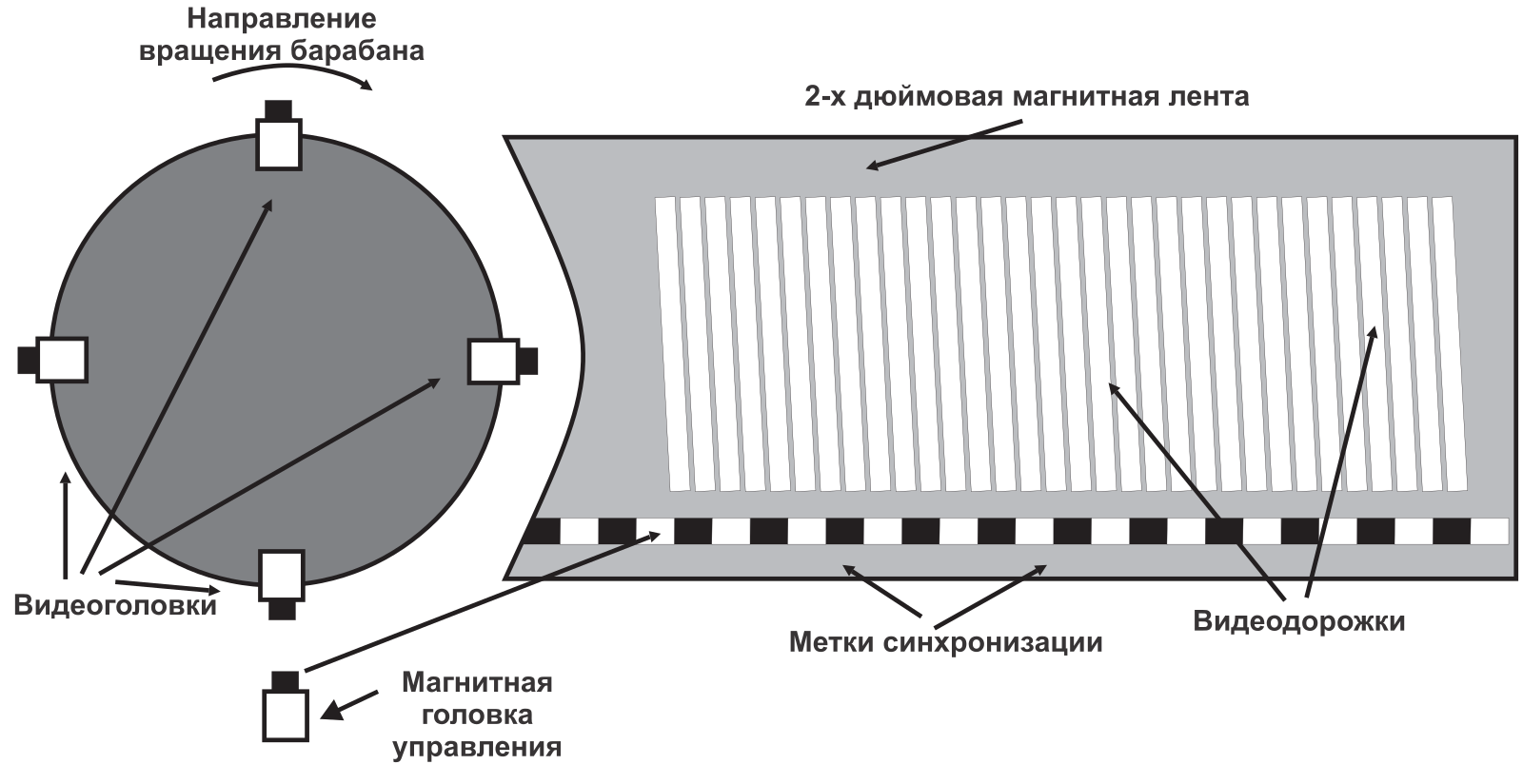
Cross-line video recording scheme
The first commercial model of the Apex VR 1000 series saw the light after 5 years. At the time of release, the device was selling for 50 thousand dollars, which at that time was a huge amount. For comparison: the Chevy Corvette, released in the same year, was offered for only $ 3000, and this car belonged, for a minute, to the sports car category.
It was the high cost of equipment that had a constraining effect on the development of video surveillance for a long time. To illustrate this fact, suffice it to say that in preparation for the visit of the Thai royal family to London, the police installed only 2 video cameras on Trafalgar Square (and this is to ensure the safety of the top officials of the state), and at the end of all the measures, the security system was dismantled.
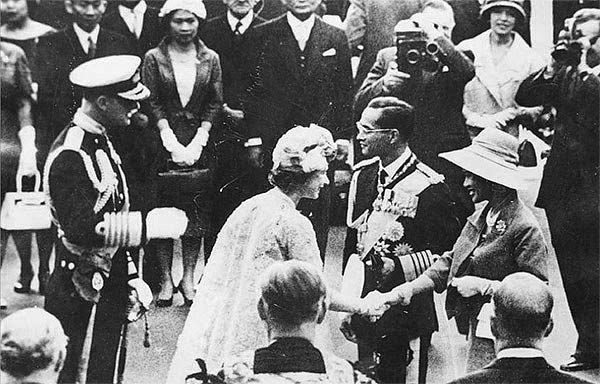
II , ,
The appearance of the functions of approaching, panning and turning on a timer made it possible to optimize the costs of building security systems by reducing the number of devices needed to control the territory, but the implementation of such projects still required considerable investments. For example, the city's video surveillance system developed for the city of Oleans, New York, and commissioned in 1968, cost the city government $ 1.4 million, and took 2 years to deploy, despite the fact that the entire the infrastructure was represented by only 8 video cameras. And of course, there was no talk of any round-the-clock recording then: the video recorder was turned on only at the command of the operator, because both the film and the equipment itself were too expensive, and there was no question of their operation 24/7.
Everything changed with the spread of the VHS standard, the emergence of which we owe to the Japanese engineer Shizuo Takano, who worked at JVC.

Shizuo Takano, creator of the VHS
format The format assumed the use of azimuth recording, in which two video heads are used at once. Each of them recorded one television field and had working gaps deviated from the perpendicular direction by the same angle of 6 ° in opposite directions, which made it possible to reduce cross-talk between adjacent video tracks and significantly reduce the gap between them, increasing the recording density. The video heads were mounted on a 62 mm drum rotating at 1500 rpm. In addition to the inclined video tracks, two audio tracks were recorded along the upper edge of the magnetic tape, separated by a protective gap. A control track containing frame sync pulses was recorded along the bottom edge of the tape.
When using the VHS format, a composite video signal was recorded on the cassette, which made it possible to dispense with a single communication channel and significantly simplify the switching between the receiving and transmitting devices. In addition, unlike the Betamax and U-matic formats popular in those years, which used a U-shaped magnetic tape loading mechanism with a turntable, which was typical for all previous cassette systems, the VHS format was based on a new principle of the so-called M -fueling.
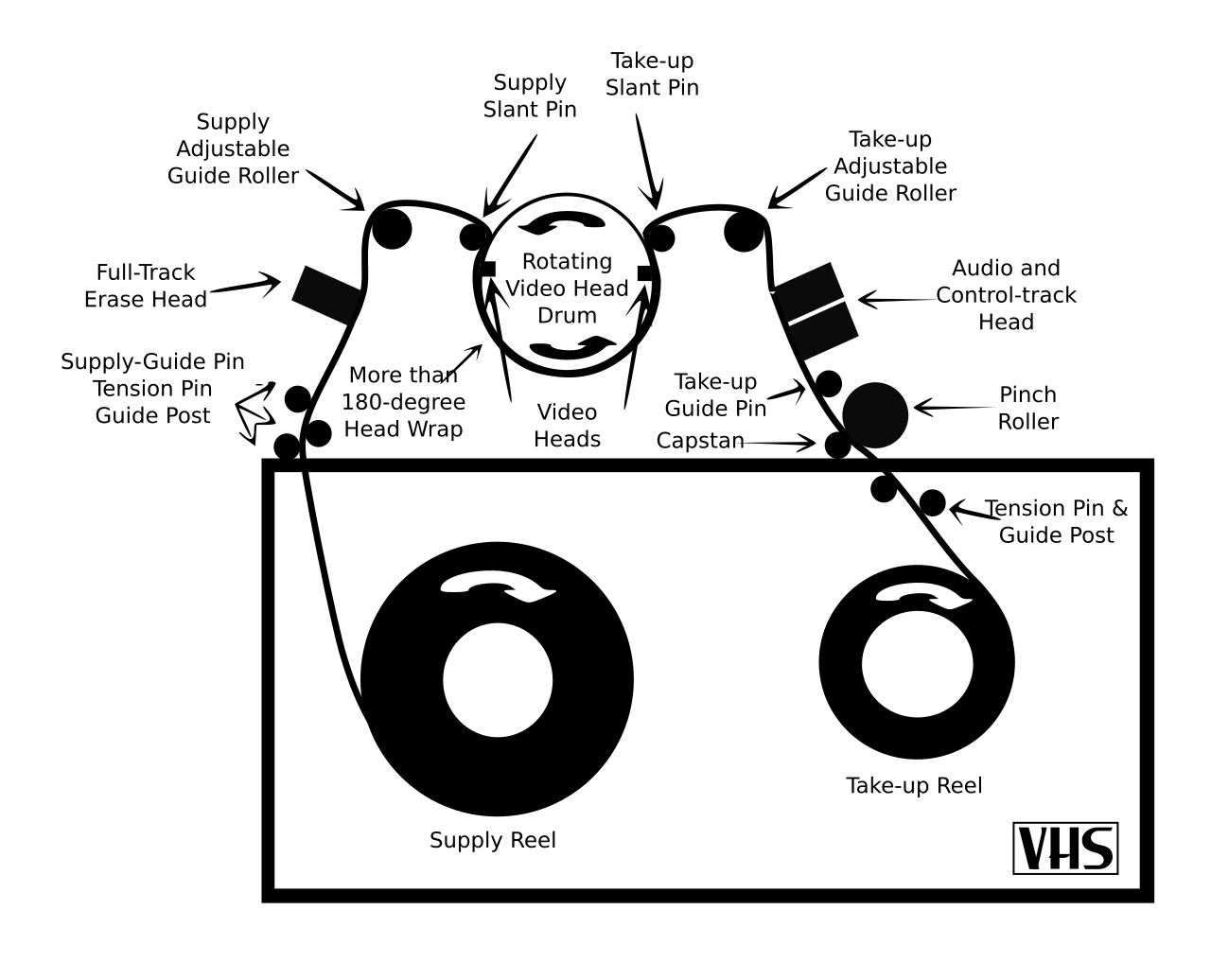
Scheme of M-filling of a magnetic tape in a VHS cassette
Removal and filling of a magnetic tape was carried out using two guide forks, each of which consisted of a vertical roller and an inclined cylindrical rack that determines the exact angle of tape entry onto the drum of rotating heads, which ensured the slope of the video track to the base edge. The angles of entry and exit of the tape from the drum were equal to the angle of inclination of the drum rotation plane to the base of the mechanism, due to which both cassette rolls were in the same plane.
The M-threading mechanism proved to be more reliable and helped to reduce the mechanical stress on the film. The absence of a turntable simplified the manufacture of both the cassettes themselves and the VCRs, which favorably affected their cost. Largely due to this, VHS won a landslide victory in the "format war", making video surveillance truly accessible.
Video cameras also did not stand still: devices with a cathode-ray tube were replaced by models made on the basis of CCD matrices. The world owes the emergence of the latter to Willard Boyle and George Smith, who worked at AT&T Bell Labs on semiconductor data storage devices. In the course of their research, physicists have discovered that the integrated circuits they created are subject to the action of the photoelectric effect. As early as 1970, Boyle and Smith introduced the first linear photodetectors (CCDs).
In 1973, Fairchild began serial production of 100 × 100-pixel CCDs, and in 1975, Steve Sasson of Kodak created the first digital camera on the basis of such a matrix. However, it was completely impossible to use it, since the process of forming the image took 23 seconds, and its subsequent recording on an 8 mm cassette lasted one and a half times longer. In addition, 16 nickel-cadmium batteries were used as a power source for the camera, and all this stuff weighed 3.6 kg.
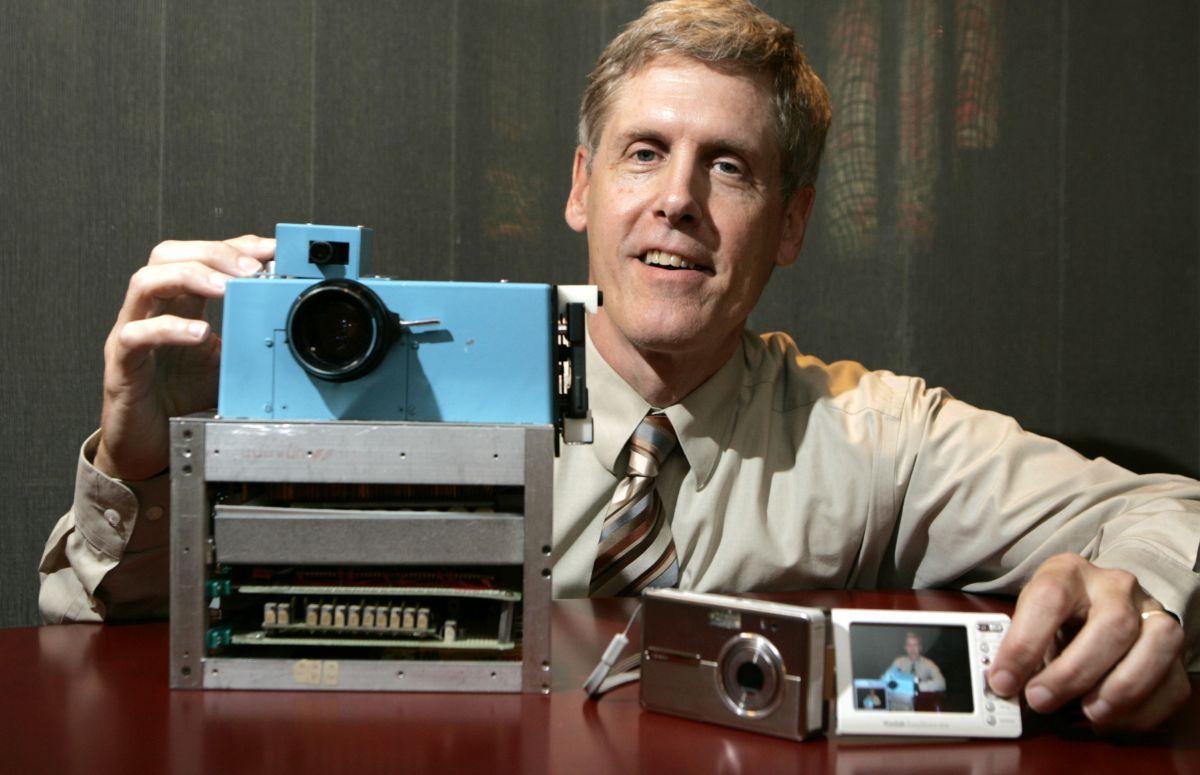
Steve Sasson and the first Kodak digital camera in comparison with modern "soap boxes"
The main contribution to the development of the digital camera market was made by Sony Corporation and personally Kazuo Iwama, who headed Sony Corporation of America in those years. It was he who insisted on investing huge funds in the development of its own CCD chips, thanks to which, already in 1980, the company introduced the first XC-1 color CCD video camera. After Kazuo's death in 1982, a tombstone was installed on his grave with an embedded CCD matrix.
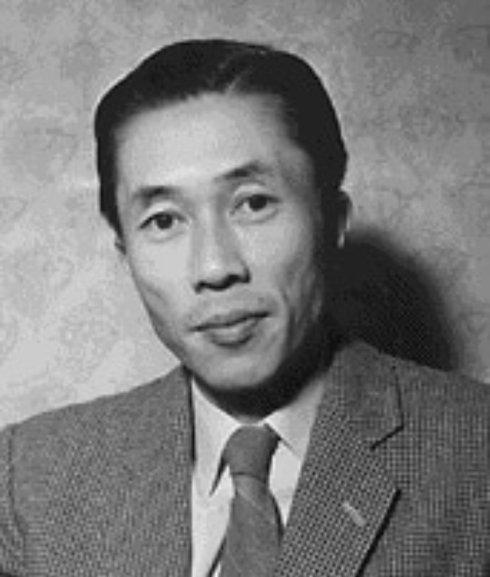
Kazuo Iwama, President of Sony Corporation of America in the 70s of the XX century
Well, September 1996 was marked by an event that can be compared in importance to the invention of the iconoscope. It was then that the Swedish company Axis Communications introduced the world's first "digital camera with web server functions" NetEye 200.
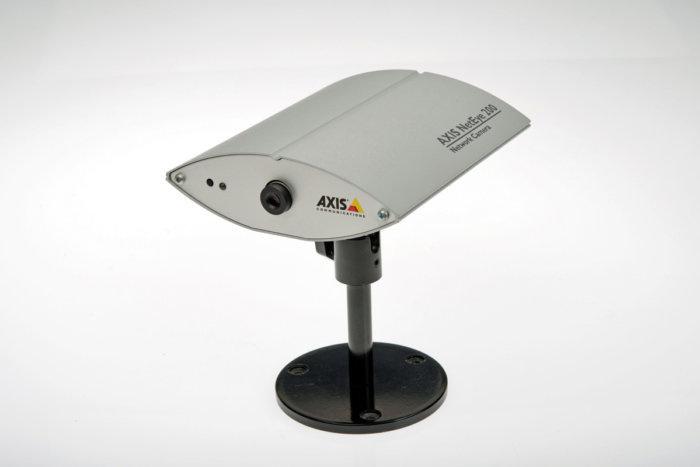
Axis Neteye 200 - the world's first IP camera
Even at the time of the release, NetEye 200 could hardly be called a video camera in the usual sense of the word. The device was inferior to its counterparts literally on all fronts: its performance varied from 1 frame per second in CIF format (352 × 288, or 0.1 Mp) to 1 frame in 17 seconds in 4CIF (704 × 576, 0.4 Mp). moreover, the recording was saved not even in a separate file, but as a sequence of JPEG images. However, the main feature of the Axis brainchild was not the shooting speed and not the clarity of the picture, but the presence of its own RISC processor ETRAX and the built-in 10Base-T Ethernet port, which made it possible to connect the camera directly to a router or a PC network card as a regular network device and control it using the bundled Java applications.It is this know-how that made many manufacturers of video surveillance systems radically reconsider their views and for many years determined the general vector of the industry's development.
More opportunities - more costs
Despite the rapid development of technology, even after so many years, the financial side of the issue remains one of the key factors in the design of video surveillance systems. Although NTP contributed to a significant reduction in the cost of equipment, thanks to which today it is possible to assemble a system similar to the one that was installed in the late 60s in Oleans for literally a couple of hundred dollars and a couple of hours of real time, such an infrastructure is no longer able to meet the many times increased needs of modern business ...
This is largely due to shifting priorities. If earlier video surveillance was used only to ensure security in a protected area, today the main driver of industry development (according to Transparency Market Research) is retail, which such systems help to solve various marketing problems. A typical scenario is to determine the conversion rate based on the number of visitors and the number of customers passing through the checkout counters. If we add a facial recognition system to this, integrating it with the existing loyalty program, we will get the opportunity to study customer behavior with reference to socio-demographic factors for the subsequent formation of personalized offers (individual discounts, bundles at a bargain price, etc.).
The problem is that the implementation of such a video analytics system is fraught with significant capital and operating costs. The sticking point here is facial recognition. It is one thing to scan a face full-face at the checkout with contactless payment, and quite another - in the stream (in the trading floor), at different angles and in different lighting conditions. Here, only 3D face modeling in real time using stereo cameras and machine learning algorithms can demonstrate sufficient efficiency, which will lead to an inevitable increase in the load on the entire infrastructure.
With this in mind, Western Digital has developed the concept of Core to Edge storage for Surveillance, offering customers a comprehensive set of state-of-the-art camera-to-server video recording solutions. The combination of advanced technologies, reliability, capacity and performance allows you to build a harmonious ecosystem that can solve almost any task, and optimize the costs of its deployment and maintenance.
The flagship line of our company is a family of specialized hard drives for video surveillance systems WD Purple with capacities from 1 to 18 terabytes.

Designed for 24/7 use in HD video surveillance, the Magenta Series incorporates the latest Western Digital hard drive technology.
- HelioSeal
The older models of the WD Purple line with capacities from 8 to 18 TB are based on the HelioSeal platform. The casings of these drives are absolutely sealed, and the HDA is filled not with air, but with rarefied helium. Reducing the resistance force of the gas medium and turbulence indices made it possible to reduce the thickness of the magnetic plates, as well as to achieve a higher recording density by the CMR method due to an increase in the accuracy of head positioning (using Advanced Format Technology). As a result, migrating to WD Purple delivers up to 75% capacity growth in the same racks, without the need to scale infrastructure. In addition, helium drives are 58% more energy efficient than conventional HDDs by reducing the power consumption required to spin up and rotate the spindle.Additional savings come from lower air conditioning costs: under the same load, WD Purple is 5 ° C cooler on average.
- AllFrame AI
The slightest interruptions during recording can lead to the loss of critical video data, making it impossible for subsequent analysis of the information received. To prevent this, support for the optional Streaming Feature Set section of the ATA protocol was introduced into the firmware of the purple series drives. Among its capabilities, it is necessary to highlight the optimization of the use of the cache depending on the number of processed video streams and control of the priority of the execution of read / write commands, thereby minimizing the probability of frame skipping and the appearance of image artifacts. In turn, the innovative set of AllFrame AI algorithms provides the ability to operate hard drives in systems that process a significant number of isochronous streams:WD Purple drives support up to 64 simultaneous HD cameras and are optimized for high-load video analytics and Deep Learning.
- Time Limited Error Recovery Technology
One of the most common problems when working with highly loaded servers is the spontaneous decay of a RAID array caused by exceeding the acceptable error correction time. The Time Limited Error Recovery option helps to avoid the HDD shutdown in case the timeout exceeds 7 seconds: to prevent this from happening, the drive will send a signal to the RAID controller, after which the correction procedure will be postponed until the system is idle.
- Monitoring system Western Digital Device Analytics
The key challenges in designing video surveillance systems are increasing uptime and reducing downtime due to failure. With the help of the innovative Western Digital Device Analytics (WDDA) software complex, the administrator gains access to a variety of parametric, operational and diagnostic data on the state of drives, which allows you to quickly identify any problems in the operation of the video surveillance system, plan maintenance in advance and promptly identify hard drives to be replaced. ... All of the above helps to significantly increase the resiliency of the security infrastructure and minimize the likelihood of losing critical data.
Western Digital has developed a line of highly reliable WD Purple memory cards specifically for today's digital cameras. Extended rewriting resource and resistance to negative environmental influences allow using these cards for equipment of both internal and external CCTV cameras, as well as for use as part of autonomous security systems, in which microSD cards play the role of the main data storage devices.

The WD Purple series of memory cards currently includes two product lines: WD Purple QD102 and WD Purple SC QD312 Extreme Endurance. The first included four modifications of flash drives ranging from 32 to 256 GB. Compared to consumer solutions, WD Purple has been specifically tailored for today's digital video surveillance systems through a number of important enhancements:
- ( 1 ) ( -25 °C +85 °C) WD Purple , ;
- 5000 500 g ;
- 1000 / , , ;
- the remote monitoring function helps to quickly monitor the status of each card and plan more efficiently the maintenance work, which means further increase the reliability of the security infrastructure;
- Compliance with UHS Speed Class 3 and Video Speed Class 30 (128GB or more) makes WD Purple cards suitable for high definition cameras, including panoramic models.
The WD Purple SC QD312 Extreme Endurance line includes three models: 64, 128 and 256 gigabytes. Unlike WD Purple QD102, these memory cards are capable of withstanding a significantly higher load: their service life is 3000 P / E cycles, which makes these flash drives ideal for use in high-security facilities, where recording is carried out 24/7.